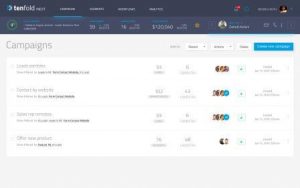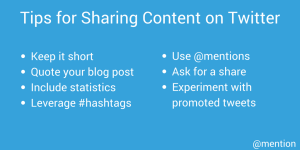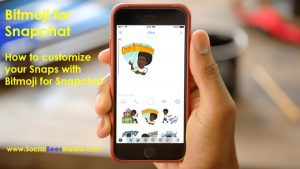— March 13, 2019
So you built your effective email campaign strategy and now you want to build an attractive and appealing monthly newsletter? Well, you came to the right place. In this blog, we will break down the components of crafting an effective newsletter.
Let’s Start With the Basics
You first want to breakdown your goals, and to do this, you need to identify your SMART goals (specific, measurable, attainable, relevant, and timely). Ask yourself, ‘What am I trying to accomplish with this newsletter?’. Is your goal for readers to fill out a form? Visit your website? Follow you on Facebook?
Whatever your primary objective is, make sure you develop SMART goals to reflect it. For example, if you are sending your newsletter to 100 contacts and your goal is to get readers onto your website, a smart goal might be:
‘Get 3% of my March newsletter readers to my website by clicking on the call-to-action button on the bottom of the newsletter’
Let’s break it down: The goal is specific because you breakdown the number of visitors (3%) you want and within a specified time (March). The goal is measurable, because newsletter analytics will show you how many clicks you get via the CTA, and, you can use Google Analytics on your website to see the traffic you curated. The goal is attainable because MailChimp reports that the average click-thru rate in a newsletter is between 2-4%, so 3% is reachable.
It is relevant because if your KPIs (key performance indicators) are focused on product or service sales, and if the CTA leads to your website where your services and products are showcased, you have a better chance of earning sales when people click the CTA and visit your site. And lastly, this goal is timely, because the March newsletter will be happening in the current month you send it.
Next Steps
Once you have developed your SMART goals for the newsletter, you need to determine the content that you will be sharing. Newsletters are a great way to update your audience with company news. The content you might include could be a new team member, a recent podcast, blog or webinar, any public events coming up, a new product or service offering, or a discount.
Whatever content you choose, make sure it is relevant to your audience and offers value. No one wants to sign up for an email that doesn’t offer any kind of value to them.
Now The Fun Part
Once you determine the written content you will be sharing, now you can begin the fun part – design and layout! When figuring out the layout, a best practice is to keep to a 1-2 column layout – you don’t want to provide too much content. Keep the newsletter clear, and short and sweet.
In terms of visuals, don’t be afraid to add a splash of color. You want to make the visual content just as enjoyable as your written content. Something to keep in mind is images. You want to have images in your newsletter to grab attention, but keep in mind, sometimes the images won’t load unless your audience clicks the ‘View Images’. With this in mind, make sure the message still gets across even without images.
Depending on which email platform you use (HubSpot, MailChimp, etc.) more often than not, these platforms will have email templates that you can start building off of.
A few design tips to keep in mind:
- Have a well crafted and compelling call-to-action
- Make sure the newsletter is branded in your color scheme
- Use icons and visuals
- Include customized infographics
For more design tips, check out Venngage.
When you design and craft your newsletter, keep in mind that a good amount of readers will be on their mobile device. This means that the content should be kept short and sweet, yet relevant and enjoyable, but NOT too salesy. Also, keep in mind that the layout will be different. It is a good idea to check out the mobile preview layout before hitting that ‘Send’ button.
Gettin’ Close
Now that you have your goals in mind, the content you want to share, and the design and layout completed, it is time to develop your outreach strategy.
Within the outreach strategy, comes segmentation. You might have your list of contacts you will be sending the newsletter too, but there is more to it than just clicking ‘Send To All’. It is important to send your newsletter to the correct contacts, based on segmentation. You can segment your contacts by purchasing behavior, interests, location, where they are in the buyer’s journey, etc.
A good way to segment and automate these emails is by using an automation platform such as MailChimp or HubSpot. It is important to segment your audiences because it will ensure that you are sending the right content, to the right people.
Depending on your segmentation lists, you will have to customize the newsletter content to reflect that. For example, you do not want to include a product discount for a store in Wisconsin for your contacts who live in another state or even another country.
This brings up another great point. Personalization. By adding the contacts name to the subject line, or by asking how the weather is wherever they live, personalizing emails will increase audience engagement, interaction, and attention (HubSpot). You gain this information from people when they sign up for your newsletter, and then you have the option to save the newly gathered information in your contact properties within your customer relationship management system.
Now What?
You crafted your content, designed your newsletter, segmented your lists, adjusted the content accordingly, and added personalization tokens, now what? You’re almost there! A critical factor to keep in mind is making sure the newsletter is compliant with the law. Sounds scary, but relax, it isn’t.
Before you hit the ‘Send’ button, make sure you follow these rules as explained by the Federal Trade Commission:
- Don’t use false or misleading header information
- Don’t use deceptive subject lines
- Identify the message as an ad
- Tell recipients where you’re located
- Tell recipients how to opt out of receiving future emails from you
- Honor opt-out requests promptly
- Monitor what others are doing on your behalf
For more information on rules, check out Campaign Monitor, the CAN-SPAM Act, and the EU General Data Protection Regulation.
A Few Newsletter Best Practices:
- Promote your newsletter sign up on your website and social media: share what the readers will get. Show value.
- Be Intentional with your content
- Focus on Tangible Results – how many opens and clicks did I get?
- Send to the Right People – segmentation!
- Keep the content fresh and relevant
- Send it at the right time
- Add personalization tokens
- Have the subscribe opt-out option
In conclusion, building an effective newsletter for your business is a great way to keep your contacts up-to-date on your business, share discounts, and stay top of mind. By crafting the perfect content to share, along with the perfect design and segmenting your contact lists, you’re on your way to developing an effective and high-performing monthly newsletter!
Digital & Social Articles on Business 2 Community
(49)






